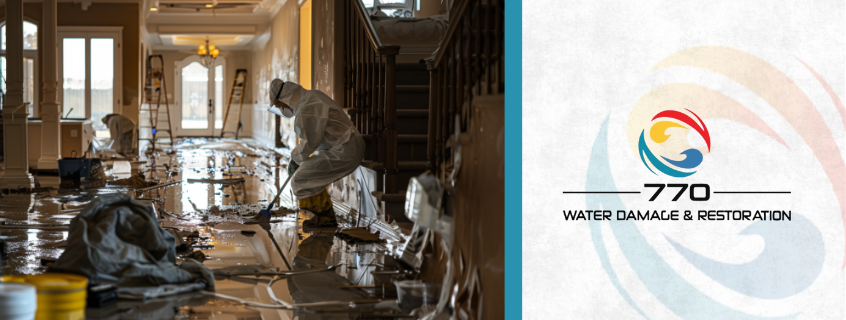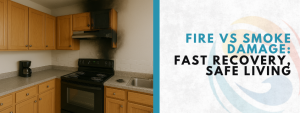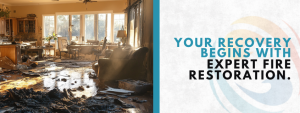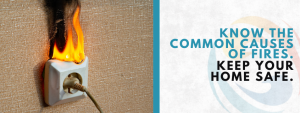
Decorating your home is a joyful experience. From selecting colors to matching textures, the process helps personalize your space. But did you know some popular styles might be hiding serious damage right under your nose? In this article, we’ll explore five common home decor trends that, while beautiful, can accidentally mask issues like mold, water damage, cracks, and even pest infestations. And most importantly, we’ll help you understand how to spot problems early, before they become costly repairs.
Let’s dive deep, not just into the trends themselves, but how to be smart and stylish without risking your home’s health.
1. Wall Wood Panels: Stylish Yet Sneaky
Wall wood panels have made a massive comeback. Whether it’s rustic shiplap or elegant tongue-and-groove, these designs are among the most loved home decor trends today. But while they add warmth and texture, they can also be the perfect hiding spot for damage.
Here’s how wall panels can cover up problems:
- Water damage: Moisture from leaks can seep behind the panels, especially in bathrooms or basements.
- Mold growth: Without airflow, dark, damp areas behind wood panels can allow mold to thrive unnoticed.
- Cracks or structural issues: Wall panels make it easy to cover imperfections rather than fix them.
Signs to watch for:
- A musty smell near paneled areas
- Warping or bubbling on the surface
- Discoloration or dark spots at seams
Common Wood Panel Styles That Might Hide Damage:
| Type | Look & Feel | Risk Level for Concealed Damage |
| Shiplap | Rustic, farmhouse | Moderate to High |
| Beadboard | Classic, cozy | Moderate |
| Tongue-and-Groove | Sleek, modern | High |
| Reclaimed Wood | Vintage, earthy | Very High |
To keep your panel walls beautiful and safe, do routine checks behind the panels, especially in damp rooms. And if you’re remodeling, it’s always a good idea to have a professional inspection done before installing new wood panels.
For expert help on underlying wall issues or water leaks, you can always consult professionals experienced in restoration.
2. Floating Shelves: Less Wall, More Risk?
Open shelving—especially floating shelves—has soared in popularity. These shelves add style and functionality without making the space feel cluttered. As one of the leading home decor trends, they’re especially common in kitchens and living rooms.
But their sleek design comes with hidden dangers:
- Hidden wall stains: The area behind floating shelves often goes unexamined.
- Damp drywall: Leaks from above or behind can cause damage where shelves are mounted.
- Mold growth: With less visibility, any issue behind or under the shelf may stay out of sight.
Quick Checklist for Shelf Areas:
- Remove all items every few months and inspect the wall.
- Look for signs of warping or soft spots.
- Sniff around—musty smells often point to mold.
Floating shelves aren’t bad—far from it! But use them mindfully and don’t let their clean look fool you into thinking your wall is problem-free.
3. Layered Rugs and Carpeting: Cozy Covers That Conceal
There’s no denying that layered rugs or plush carpets are comfy, cozy, and incredibly trendy. Many people use them to create focal points or define living zones. And yes, they’re one of the coziest home decor trends out there.
But rugs are great at one thing: hiding damage.
What Can Be Hidden Beneath Rugs:
- Water-stained flooring
- Soft spots in hardwood
- Mold or mildew on padding
- Pet urine or spills that never dried properly
Maintenance Tips:
- Lift rugs monthly to check underneath.
- Use waterproof rug pads, especially in high-moisture areas like kitchens and entryways.
- Watch for curling edges, which can mean moisture underneath.
Did you know that hidden water under carpets can cause long-term structural issues? That’s why, if you’ve had any kind of spill or leak, it’s wise to take immediate action to protect your floors.
Pro Tip: Always allow floors to fully dry before placing rugs or mats. And opt for breathable materials.
4. Statement Furniture: Big Looks, Bigger Blind Spots
Chunky bookshelves. Oversized dressers. Giant entertainment units. These eye-catching items are another of today’s most impactful home decor trends. But with great size comes great… coverage.
Large furniture can:
- Block wall cracks
- Hide foundation shifts
- Cover up baseboard damage or leaks
Areas Commonly Affected:
- Behind headboards on exterior walls
- Back of entertainment centers in basements
- Under freestanding wardrobes on upstairs floors
Because furniture isn’t moved often, issues behind it can stay hidden for years. This is especially dangerous if pests are involved or moisture is creeping in from the outside.
Furniture Inspection Tips:
- Slide furniture away from the wall every few months.
- Use a flashlight to check corners and baseboards.
- Install felt pads to make future moving easier.
Furniture should be an accent, not a disguise. So while decorating, don’t forget to give those hidden corners the attention they need.
5. Ceiling Accents and Lighting Fixtures: Above Eye-Level, Below the Radar
Ceiling features like coffered panels, faux beams, and chandeliers add a dramatic flair. As unique home decor trends, these elements draw attention, just not the kind that alerts you to damage.
The problem? They’re way above our daily line of sight.
Types of Damage Often Missed:
- Water spots from roof leaks or upstairs plumbing
- Cracks from structural movement
- Nesting spots for pests in ceiling voids
Warning Signs to Look For:
- Peeling paint around fixtures
- Brown or yellow ceiling stains
- Flickering lights (might indicate wiring issues or moisture)
Monthly Ceiling Check Routine:
- Use a step ladder to inspect hard-to-see areas.
- Look behind decorative crown moldings.
- Check for sagging or softness in wood ceiling beams.
Even if your ceiling is picture-perfect, what lies above it could be a different story. If there’s been a storm, leak, or burst pipe, it’s smart to have professionals assess hidden ceiling damage before things get worse.
Final Thoughts: Style Meets Smart Maintenance
You don’t need to give up your favorite home decor trends. The goal isn’t to scare homeowners away from beautiful design, but to remind everyone that beauty shouldn’t come at the expense of your home’s well-being.
Smart Decorating Tips:
- Design with airflow in mind, especially in humid areas.
- Regularly inspect covered surfaces or walls behind furniture.
- Use materials that resist moisture and mold.
- Don’t let “out of sight” mean “out of mind.”
Decor trends are always evolving, and so should your maintenance habits. By staying aware and doing periodic checkups, you can keep your home stylish and safe.
And if you ever feel like something’s off—whether it’s a faint smell or slight discoloration-it’s best not to wait. Trust your instincts and reach out to those who specialize in identifying and repairing damage before it spreads.
So go ahead, embrace wood panels, stylish shelves, cozy rugs, and grand chandeliers. Just remember, being a smart decorator means looking behind the beauty once in a while.
Frequently Asked Questions: Protecting Your Home While Staying on Trend
1. How do I know if my wall panels are hiding water damage or mold?
You might notice a musty smell, slight discoloration, or warped wood, which are common signs of hidden moisture. Regularly check behind panels, especially in humid areas like bathrooms or basements.
2. Can rugs and carpets hide serious damage to my floors?
Yes, rugs can easily cover water stains, warped wood, or even mold growth. Lift and inspect them regularly to catch issues before they worsen.
3. Should I worry about furniture hiding wall or floor damage?
Large furniture can block cracks, leaks, or pest problems from view. Moving and inspecting behind these pieces every few months helps catch early signs.
4. What ceiling signs should I look out for that might indicate hidden damage?
Peeling paint, brown stains, or flickering lights near fixtures can all signal leaks or wiring issues. Use a ladder to inspect these areas monthly if possible.
5. Is it okay to keep using these home decor trends if they might hide problems?
Yes, you can enjoy these styles with regular maintenance and awareness. Just be proactive in checking behind, under, and above your décor to keep your home healthy.






